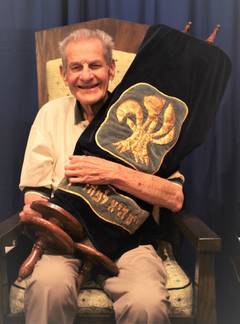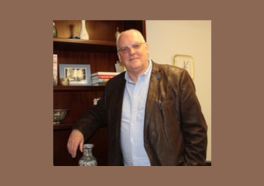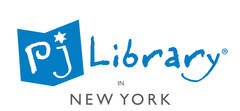- About Us
- Connect
- Learn
- Jewish Life
- Music
- Events
- Give
- Join Us
Seeing the Color
09/30/2016 03:16:56 PM
Rabbi Jennifer Jaech
| Author | |
| Date Added | |
| Automatically create summary | |
| Summary |
Delivered Rosh Hashanah Evening
This past July I went on a Jewish heritage tour of Eastern Europe along with several members of our congregation. Before the trip, when I imagined the places we would visit, I pictured them in black and white.
It felt like I had been preparing for this trip for decades. I first learned about the Holocaust in high school. Ever since that time, the question of how a systematic regime of terror and murder could possibly arise in a “civilized” culture haunted me. In my mind, the Holocaust offered the starkest evidence that humankind does not necessarily progress ever forward, propelled by our advances in science and technology. Humankind can just as easily revert to naked brutality.
Over the years, I read about the Holocaust, visited memorials and museums, and discussed the Nazi atrocities with others. And I looked at the images: Black-and-white still photographs and grainy film footage of light and shadow.
Most of the photographs and films of Europe in the 1930's and 40's are black-and-white. Stephen Spielberg must have known this when he shot the film "Schindler's List" primarily in black- and-white. I wonder if Spielberg made that choice in recognition of the fact that our memories of that time are preserved absent color.
Black-and-white images seem more removed from life. It’s as if they describe events that happened safely in the past. Black-and-white images lead us to think: well, that's history. It’s all behind us now.
This can be a comforting thought.
Terezin was among the places our group visited in July. It takes about an hour to drive from Prague to Terezin, and the trip is lovely.
We drove through fields of sunflowers and corn stalks while our local tour guide spoke to us about our destination. Terezin did not begin as a concentration camp. It was originally a fortress first built in the late 18 century as a defense against a possible invasion from Prussia. 20th century invaders, the Nazis, turned Terezin into a concentration camp and called it by the name that is probably more familiar to you: Theresienstadt.
We learned from our guide that people still live in Terezin. Some of the residents are descendants of the Czech civilians who were relocated by the Nazis in 1941. Others moved to Terezin later to take advantage of the low rents -- our guide told us that Terezin is the cheapest place to live in the Czech Republic. Despite the low cost-of-living, it's hard to imagine settling in a place where an estimated 33 thousand Jews died of disease or starvation, and another 90 thousand were deported to camps further in the east, almost certainly doomed to die.[1] On our visit, I only saw two or three actual residents of Terezin. The streets were quiet and empty; most of the people there were tourists, like us.
This was the first time I had ever visited a concentration camp. I wondered how I would react to it. Would I feel sadness? Fear? Would I sense the shadows of the souls whose light had been extinguished here?
Our tour bus stopped in the main square. When we descended from the bus, I did not feel fear or sadness, nor did I sense shadows. What struck me was the color. Some buildings were painted shades of light yellow or goldenrod; other buildings were powder blue. The large town square was covered in rich green grass, the sky above it a deep blue with white clouds. Everything looked so normal: so full of color.
In that moment it struck me that the people deported to Terezin did not live in a world of black-and-white. They lived in a world of fresh breezes, green grass, and blue sky like on the day we visited. They lived their lives in color, just as we do. History unfolds in color and we are living it now.
We live our lives in color, yet too often we think in black and white. Black-and-white thinking is simple and certain. It offers the security of landing on an answer and remaining there. It demands that we filter out information that does not fit the answers we have embraced. This plays out in ways big and small.
Here is one example. Many people get their news from social media such as Facebook. When you log in to Facebook, you see a “newsfeed” of items posted by friends, and other items that Facebook’s algorithm predicts you might like to see. If we see something we like in our newsfeed, we can let Facebook know by clicking on a “like” button. Facebook keeps track of what we “like.” Its algorithm gives us more of what we “like,” so we have a lesser chance of seeing things we might not like. As a result, the opinions that appear on our newsfeed are often those with which we already agree.
Don't blame Facebook. We like it that way. I've heard more than one person say that he or she has blocked certain friends on Facebook because the friends are posting political material or perspectives with which they vehemently disagree. It’s very hard to listen to perspectives so different from our own.
The same is true with the people I see in the gym in our development. I know the political leanings of the neighbors I see there without speaking a word with them about politics. I can tell because of the news channels they watch. Some will turn exclusively to Fox, others watch only MSNBC. This way, the news will be filtered in a way so as to confirm what they already believe. By the way, I am just as guilty of this practice. (You can probably guess which channel I watch.)
Only when we are willing to journey, to move to a different place, whether literally or figuratively, can we see the world in a truer light. And that's what we are called to do on these Holy Days: we are called to take a journey so that we can see ourselves in a truer light and see others in a truer light.
That’s what this summer’s journey to Eastern Europe did for me, in so many ways. Tonight I will mention just one more experience from that trip.
Before I went to Poland, I had a black-and-white view of Polish anti-Semitism. I had heard that the Poles were zealous anti-Semites, willing partners with Hitler in the destruction of Polish Jewry. I had also heard that widespread Polish anti-Semitism persists to this day.
In Warsaw, our Polish-Catholic guide, Yolanta, took us to Polin, a new museum of Jewish life in Poland. For five hundred years, the Polish people welcomed Jewish settlement when other countries did not. That's why over three million Jews lived there at the start of World War II, the largest Jewish community by far in Europe. The Polin museum in Warsaw documents the lives and experiences of Polish Jews during those five hundred years. It is funded primarily by the Polish government; on the day that we visited it was crowded with people.
When our group reached the part of the exhibit that documented the Nazi invasion of Poland, Yolanta told us that the Nazis established a policy in Poland that they did not establish elsewhere: if a Polish gentile was caught helping a Polish Jew, even for an act as small as giving a crust of bread, not only would the Polish gentile be killed, but members of his family would be killed as well. In Poland, it seemed, the Nazis had to take extreme measures to ensure that Polish gentiles would not help their Jewish neighbors, measures that the Nazis did not take elsewhere. If all Polish gentiles were indeed eager partners with the Nazis in the murder of Jews, there would be no need for such an extreme policy.
Traveling to Poland made me realize the limits of my black-and-white view of Polish anti-Semitism. It's a lot more complicated than I thought it was. If I want to truly understand the Jewish experience in Poland, I need to see the color, the nuance, and stop thinking in black-and-white. This means there is a lot more for me to learn.
As we enter this New Year and these High Holy Days together, we each face questions that are far too complex for black-and-white answers. Some of these questions are personal, relating to struggles and challenges we face in ourselves, our family, our friendships, or our professional lives. Others are questions we all face about the future of our Jewish community, our nation, and our planet.
Back when I was a much younger rabbi, just out of rabbinic school, I had the grandiose idea that I somehow needed to provide answers for you in my High Holy Day sermons. As I’ve grown older, I have a different view. Now I think it is my role to help you see the nuance, the diversity, the complexity and the richness of our Jewish heritage, our people, and our world. In this way, I hope to lead you to reject the black-and-white and embrace the color. Only when we open our eyes to the color can we begin to understand ourselves and our world. Only when we open our eyes to the color can we see before us the journeys we have yet to take, and behold the richness of our potential in this New Year.
[1] For more information, see the article on Theresienstadt at the United States Holocaust Memorial Museum : https://www.ushmm.org/wlc/en/article.php?ModuleId=10005424
Thu, April 24 2025
26 Nisan 5785
Temple israel Happenings
-
Thursday ,
AprApril 24 , 2025 County-Wide Yom HaShoah Commemoration
County-Wide Yom HaShoah Commemoration
Thursday, Apr 24th 12:00pm to 1:00pm
County-Wide Yom HaShoah Commemoration at the Garden of Remembrance, 119 Martine Avenue in White Plains. Temple Israel's rescued Holocaust Torah scroll will be part of the procession of scrolls from Westchester county, and Cantor Hayley Kobilinsky will participate in the program. -
Tuesday ,
AprApril 29 , 2025 Sisterhood Book Group
Sisterhood Book Group
Tuesday, Apr 29th 6:00pm to 8:30pm
NEW DATE! We will be discussing the book "The Frederick Sisters Are Living the Dream" by Jeannie Zusy in person at a congregants' home. The author will be joining us for the discussion. We will have a Pot Luck Dinner to start -
Wednesday ,
AprApril 30 , 2025 Holocaust Education Today: Challenges and Limits by Dr. Werner Steger
Holocaust Education Today: Challenges and Limits by Dr. Werner Steger
Wednesday, Apr 30th 6:00pm to 7:30pm
Dr. Steger serves as the endowed chair for the Greenspan-Handel Trust for Holocaust and Genocide Studies. -
Saturday ,
MayMay 3 , 2025 Midnight Run
Midnight Run
Shabbat, May 3rd 1:00pm to 4:00pm
Volunteers needed. The Midnight Run is a volunteer organization whose goal is to come together as a community in order to feed the homeless of New York City. They coordinate more than 1,000 relief missions per year with volunteers from churches, synagogues, schools and other civic groups to deliver food, clothing, blankets and personal care items to the homeless poor on the streets of New York City.
Events
Today's Calendar
| Yom HaShoah |
: 12:00pm |
: 7:00pm |
Friday Night
: 7:00pm |
Shabbat Day
: 9:30am |
Upcoming Programs & Events
Apr 24 |
Apr 24 |
Apr 29 |
Apr 30 |
May 2 |
This week's Torah portion is Parashat Sh'mini
| Shabbat, Apr 26 |
Yom HaShoah
| Thursday, Apr 24 |




